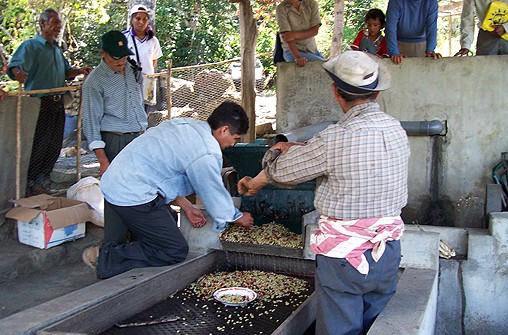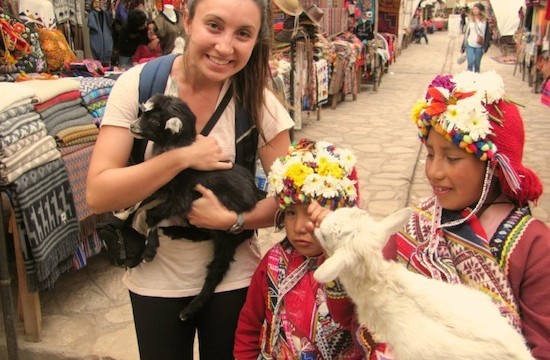Peru Lessons
Post on: 16 Март, 2015 No Comment

Extended References for Peru
http://www.odci.gov/cia/publications/factbook/pe.html
www.washingtonpost.com/wp-srv/inatl/longterm/worldref/country/peru.htm
Procedures:
1. The first activity that students will pursue is a search for information about the country of Peru. Students will work in pairs for this activity. The information may be obtained through the use of the Internet, books or any other available resources. Any topic that contains information about the country of Peru may be used for this activity.
2. The student pairs will report back to the whole class on what they have learned, and discuss the sources of their information.
3. The class will be asked to develop a numerical rank order rating for all the sources they have obtained. They will discuss how to determine the credibility of a source.
4. The class will construct a rubric (a rating table- see example ) that will consist of their decisions on how to determine a source’s credibility.
II. Development and Peru
Objectives:
The purpose of this lesson is to develop an understanding of the concept of development and how it may be defined in particular cultural contexts. Students will be given the opportunity to think about the idea of development from a variety of perspectives. In the first activity, students focus on examining their own ideas about the concept. In the second activity, they will read two provocative articles in order to develop some beginning background knowledge about development in Peru. The purpose of the third activity is to situate understanding about development in Pre-Inca times and have students examine the nature of forces of change.
II.A. What is Development?
Procedures:
1. Students will brainstorm ideas about the word development. The teacher will write these ideas on the board in the form of a map, with the word development at the center.
2. Students will be asked to situate themselves on the basis of numbers 1-5 to describe their position on whether development is good or bad. A number 1 position would indicate that development is good. A number 5 position would indicate that development is bad.
3. Students will be asked to find someone who has a different number from them and spend ten minutes in discussion about their ideas. After five minutes, the students will be asked to switch roles and be able to clearly explain their partner’s position.
4. The class will meet as a whole group and discuss any changes to be made to the class map as a result of their discussions. New ideas should be added to the Development Brainstorming Map.
II.B. Development in Modern-day Peru
Materials:
Reference Articles for Activity Two
http://newsweek.washingtonpost.com/nw-srv/issue/22_98b/printed/int/wa/ov0422_1.htm
Procedures:
1. The students will divide into small groups. Each group will choose one of the following articles:
- Newsweek (2/9/99) In Search of a New El Dorado
This article examines investment in Latin America and compares today’s investors with yesterday’s conquerors.
This article describes how development impacts the lives of disadvantaged youths in Peru.
2. The focus of the group discussion should be on how each article addresses the notion of development. After 20 minutes, the class will meet as a whole and report on their small group discussions.
II.C. Forces of Change — Ancient Peru and the Modern World
Materials:

Procedures:
1. Students will read the following excerpt about Pre-Inca cultures from von Hagen’s book Desert Kingdoms of Peru.
2. The teacher will pose the question: Corn and civilization? What does this mean?
3. The class will discuss the forces that change civilization and try to name modern day forces that have created change in civilization (i.e. technology, contact with other cultures, climate changes, war, disease, etc.) The class will compose a table entitled Forces of Change with the ideas they generate from discussion. The students will be encouraged to think of a symbol that represents each force of change they identify (for example, a computer may represent technology). The class will discuss how change may be characterized in different ways by different people with different perspectives.
The purpose of this lesson is to help students understand what art and architecture reveal about early Mesoamerica and Andean societies.
III.A. Reacting to Peruvian Art
Materials:
Procedure:
1. Students will work in groups of four and visit some of the following websites that contain images of Peruvian architecture and art. Students will organize their groups according to the areas of ceramics and pottery; painting; masonry; textiles; and metal work. See above for suggested websites to begin investigations.
2. The students will be asked to respond to some aspect of what they have seen by composing a paragraph describing their reaction, comparing it to a piece of music they know, or linking what they see on this site to different aspects of their lives. The groups will chose a person to take notes on the discussion.
3. The class will meet as a whole group to discuss their findings, and look for commonalties in elements of art or architecture that students responded to.
4. The group will examine the elements they have chosen to explore and what they reveal about the role of art and architecture in the Andean culture.
5. Closing Activity:
A. Students will choose one particular piece of art or architecture that interests them.
B. Students will then choose one of the following story starters, and write a short story.
- Imagine that you are a child living in Peru and you have been forced to leave your home to go to a new place because your village is having difficulty cultivating the rugged soil. Your parents have told you that you may only bring one item to remind you of your home. Write a story about the article you have chosen and include why you chose it, its significance to you; what it represents to your village; and memories you associate with it.
- Imagine that your are living in ancient Peru. Choose a place that has special significance to you. Describe the place, what happened there, and why it is important to you.
III.B. The Nazca Lines — Pre-Incan Culture
Objective:
The purpose of the lesson is to learn about the Nazca Lines.














